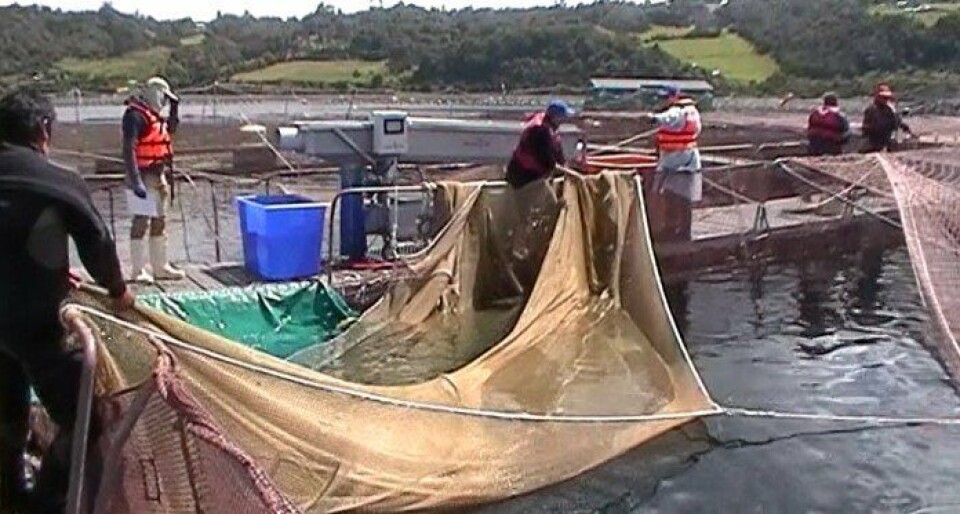
Chile: Electric delouser shows positive results in tests
A system that uses a low-power electric current to remove lice from salmon was more than 65% effective in field tests, without causing damage to the fish or descaling.
‘Shock Out’ was developed by Chilean company Indesol and has been advancing steadily through a series of field tests.
Last month Indesol tried out its technology at the Puerto Haro site of salmon farmer Salmones de Chile. The fish were passed through an electrified channel where an output volateg of 0-35 volts and a current of 0-40 mA (milliamps, or 0.04 Amps) was applied in a pulsed current.

2.5-metre channel
According to a report from Salmones de Chile, 10 fish were anaesthetised to perform a lice count and were then allowed to recover from the anaesthetic before entering the Shock Out system.
“The fish were passed manually to the 2.5-metre electricity application channel, which they were not in contact with for more than two seconds, to finally reach a recovery bins, which were anaesthetised to perform a post application counting of the Shock Out system,” Salmones de Chile said in its technical document.
After the test, the loads of the Chilean sea louse Caligus rogercresseyi that had been captured in the Shock Out filter were analysed. Only parasites were found, without the presence of fish scales. All this was carried out in the presence of the chief and assistant of the Puerto Haro farm site, a fish vet and staff from government aquaculture agency Sernapesca.
65.6% of lice removed
After the count on the fish, the salmon were left in an empty cage for recovery.
After this process, Salmones de Chile announced that the effectiveness of the Shock Out system was positive, dislodging 65.6% of total parasites, without causing damage or descaling on the test specimens.
Salmones de Chile intends to next carry out the treatment in a complete cage with the Shock Out 250 - 06 system.
Bigger area
Changes to the model are likely to include:
- Increasing the slope of the channel so that gravity helps the fish move more easily;
- Improving the water flow at the entrance of the Shock Out system;
- Increasing the size of the electricity application area.
“Our commercial system will have an application area of not less than four metres in size, whereas the one used in Salmones de Chile is our test equipment, so that with commercial size systems efficiency will be increased,” Indesol manager Raúl Álvarez told Fish Farming Expert’s Chilean sister site, Salmonexpert.























































